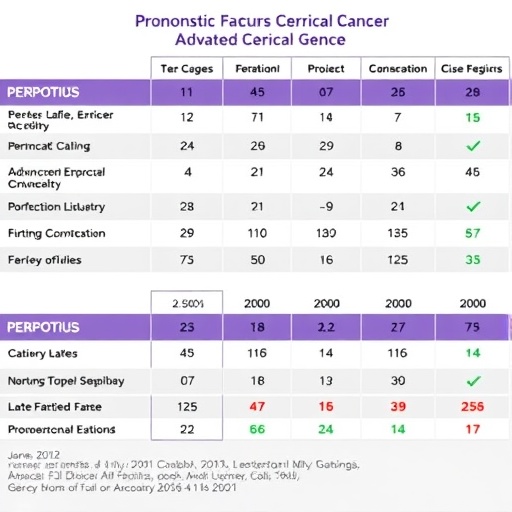Credit: Jeremie Calais and Nicholas G. Nickols, UCLA.
Current standard imaging techniques for initial staging of prostate cancer often underestimate the extent of disease beyond the prostate. A study featured in The Journal of Nuclear Medicine's November issue demonstrates that prostate-specific membrane antigen (PSMA) positron emission tomography/computed tomography (PET/CT) can pinpoint prostate cancer locations with superior accuracy. More accurate detection makes more precisely targeted treatment possible. Men with non-metastatic disease who chose radiotherapy could, therefore, improve their chances of a successful outcome with PSMA PET/CT imaging to more accurately define the areas targeted for irradiation.
"The planning of radiotherapy for prostate cancer starts with precise delineation of the anatomic targets for delivery of radiotherapy," explains Nicholas G. Nickols, MD, PhD, of UCLA and the VA Greater Los Angeles Healthcare System in Los Angeles, California. "The prostate is always included in the irradiated volume, but there is currently no consensus about whether pelvic lymph nodes that appear to be free of cancer on standard imaging should also be irradiated." He states, "Incorporation of PSMA PET/CT into the process of radiotherapy planning might improve the success rate of curative-intent prostate radiotherapy by identifying patients with occult (invisible to conventional imaging) metastatic disease or local (pelvic) disease that is not visible on conventional imaging and modifying target volumes and dose to adequately cover and control local disease."
In this project, 73 patients with localized prostate cancer and no prior local therapy underwent gallium-68 (68Ga)-PSMA-11 PET/CT scans. All patients had PSMA-positive primary prostate lesions. In addition, 25 of the 73 (34 percent) had PSMA-positive pelvic nodal metastases, and 7 (9.5 percent) had PSMA-positive distant metastases. PSMA-positive lesions not covered by planning volumes based on the clinical target volumes from standard imaging were considered to have a major potential impact on treatment planning.
Nickols reports, "We found that addition of the information from PSMA PET/CT to standard imaging had a major impact on the planning of curative-intent prostate radiotherapy for 16.5 percent to 37 percent of patients, depending on if one initially elects to target pelvic nodes that are free of disease on conventional imaging." He adds, "These findings represent another convergence of molecular imaging and precision radiotherapy. PSMA PET/CT offers unprecedented accuracy and sensitivity for detecting the location of prostate cancer within a patient, and modern radiotherapy offers a non-invasive and generally safe method for delivering a tumoricidal dose of radiotherapy to the targeted cancer."
###
Authors of "Potential Impact of 68Ga-PSMA-11 PET/CT on Prostate Cancer Definitive Radiation Therapy Planning" include Jeremie Calais, Amar U. Kishan, Minsong Cao, Matthias Eiber, Francesco Ceci, Robert E. Reiter, Matthew B. Rettig, John V. Hegde, Narek Shaverdian, Chris R. King, Michael L. Steinberg, and Johannes Czernin, UCLA, Los Angeles, California; Wolfgang P. Fendler and Ken Herrmann, UCLA and University Clinic Essen, Essen, Germany; and Nicholas G. Nickols, UCLA and VA Greater Los Angeles Healthcare System.
This study was made available online on April 13, 2018, ahead of final publication in print on November 1, 2018.
Please visit the SNMMI Media Center to view the PDF of the study, including images, and more information about molecular imaging and personalized medicine. To schedule an interview with the researchers, please contact Rebecca Maxey at (703) 652-6772 or [email protected]. Current and past issues of The Journal of Nuclear Medicine can be found online at http://jnm.snmjournals.org.
About the Society of Nuclear Medicine and Molecular Imaging
The Society of Nuclear Medicine and Molecular Imaging (SNMMI) is an international scientific and medical organization dedicated to advancing nuclear medicine and molecular imaging, vital elements of precision medicine that allow diagnosis and treatment to be tailored to individual patients in order to achieve the best possible outcomes.
SNMMI's more than 17,000 members set the standard for molecular imaging and nuclear medicine practice by creating guidelines, sharing information through journals and meetings and leading advocacy on key issues that affect molecular imaging and therapy research and practice. For more information, visit http://www.snmmi.org
Media Contact
Rebecca Maxey
[email protected]
703-652-6772
@SNM_MI
http://www.snm.org
Original Source
https://www.snmmi.org/NewsPublications/NewsDetail.aspx?ItemNumber=30348 http://dx.doi.org/10.2967/jnumed.118.209387




